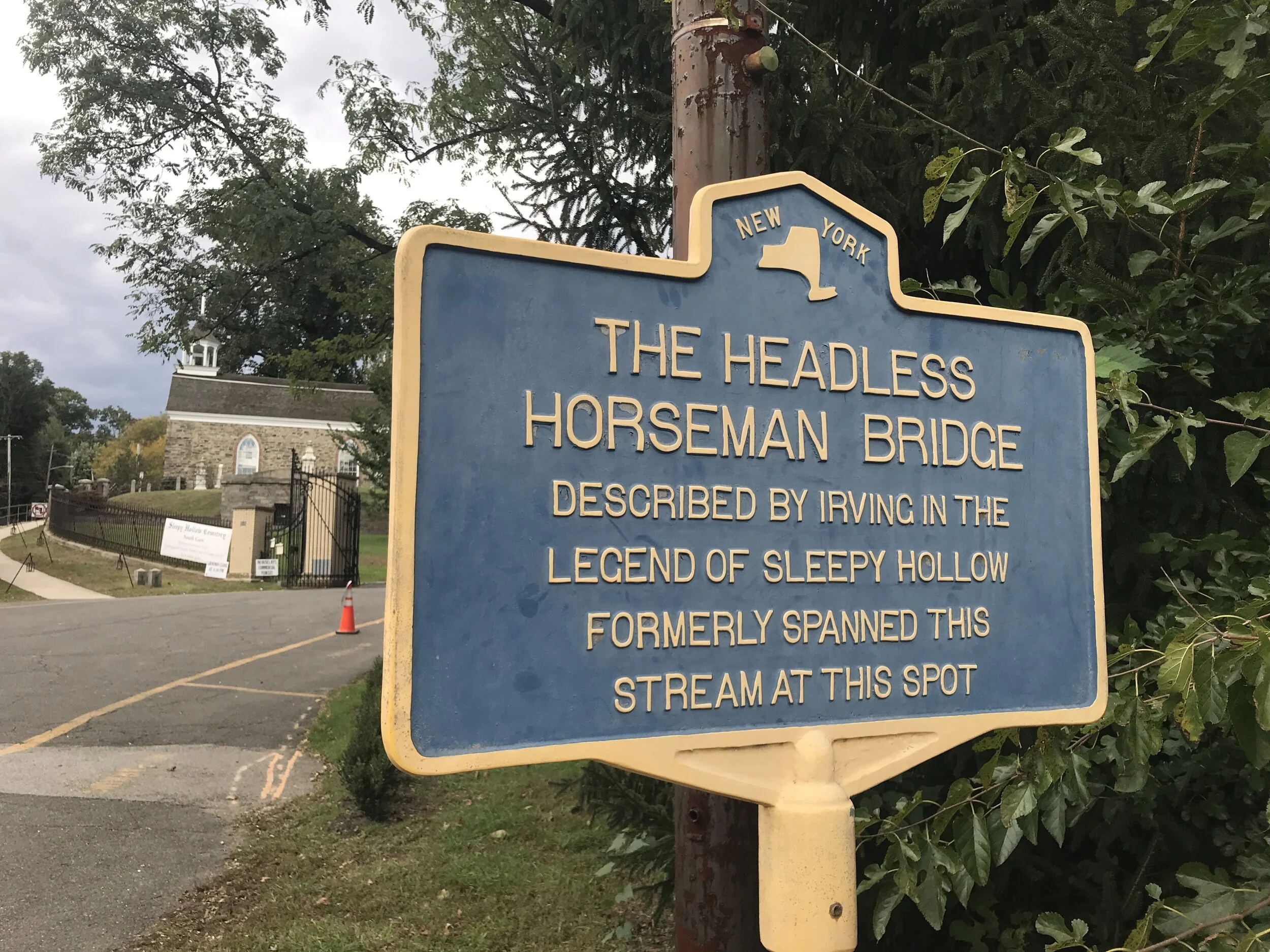
Uncanny Tourism: Rhetorical Placemaking in Sleepy Hollow, NY
Video overview, June 2020
Conference presentation for Fifth International Conference on Tourism & Leisure Studies, held virtually due to COVID-19 in June 2020.
Sarah Kennedy’s dissertation project takes up the case study of Sleepy Hollow, NY, where Washington Irving’s 1819 short story “The Legend of Sleepy Hollow” is the basis for a Halloween season and growing year-round tourism industry.
Combining rhetorical analysis, ethnographic fieldwork, and affect theory literature, Sarah is developing the concept of uncanny tourism as a practical placemaking strategy.
Abstract
In the village of Sleepy Hollow, NY, local author Washington Irving’s 1819 short story “The Legend of Sleepy Hollow” is the basis for a Halloween season tourism industry. Combining a rhetorical analysis enriched by ethnographic fieldwork with affect theory literature, this dissertation examines how Sleepy Hollow placemakers utilize Irving’s “Legend” and uncanny theming at tourist sites and events.
The context for this study is the 2019-2020 bicentennial celebration of Irving’s story of Ichabod Crane and the Headless Horseman. Over 18 months, local government leaders and historical societies presented educational programming aimed at reinforcing but also resituating the legacies of Irving and his “Legend” for the current cultural climate and the needs of today’s Sleepy Hollow community and visitors. This bicentennial positions Sleepy Hollow to merge cultural efforts in preservation of local heritage and promotion of the arts with infrastructure developments like an improved trail system connecting attractions and a new Sleepy Hollow Common. The bicentennial addressed dual goals of reevaluating the “Legend” as constitutive rhetoric for the area and expanding the tourism traditionally concentrated around Halloween across the calendar year.
This project forwards the concept of uncanny tourism as a practical placemaking strategy. An ambient sense of the uncanny is inherent at sites like Sleepy Hollow Cemetery and Irving’s preserved home at Sunnyside, where the foregrounding of death through the cemetery setting and memorializing of a deceased author encourages visitors to contemplate mortality and the supernatural. I argue that deliberate use of uncanny affect as a theming resource can be a beneficial draw for niche tourism, particularly at historic sites. This dissertation centralizes walking practice as a primary tourist mobility and means of experiencing uncanny affect in Sleepy Hollow.
Research questions include:
How does the uncanny manifest in literary works and tourism to their settings?
How does a tourist site’s literary heritage contribute to its affective co-creation as a persuasive landscape?
How do tourists interact bodily with the spaces they inhabit?
How can we understand place itself as a persuasive actor in touristic exchanges?
How can placemakers at tourist sites meaningfully utilize the uncanny affect already present at places associated with death?



